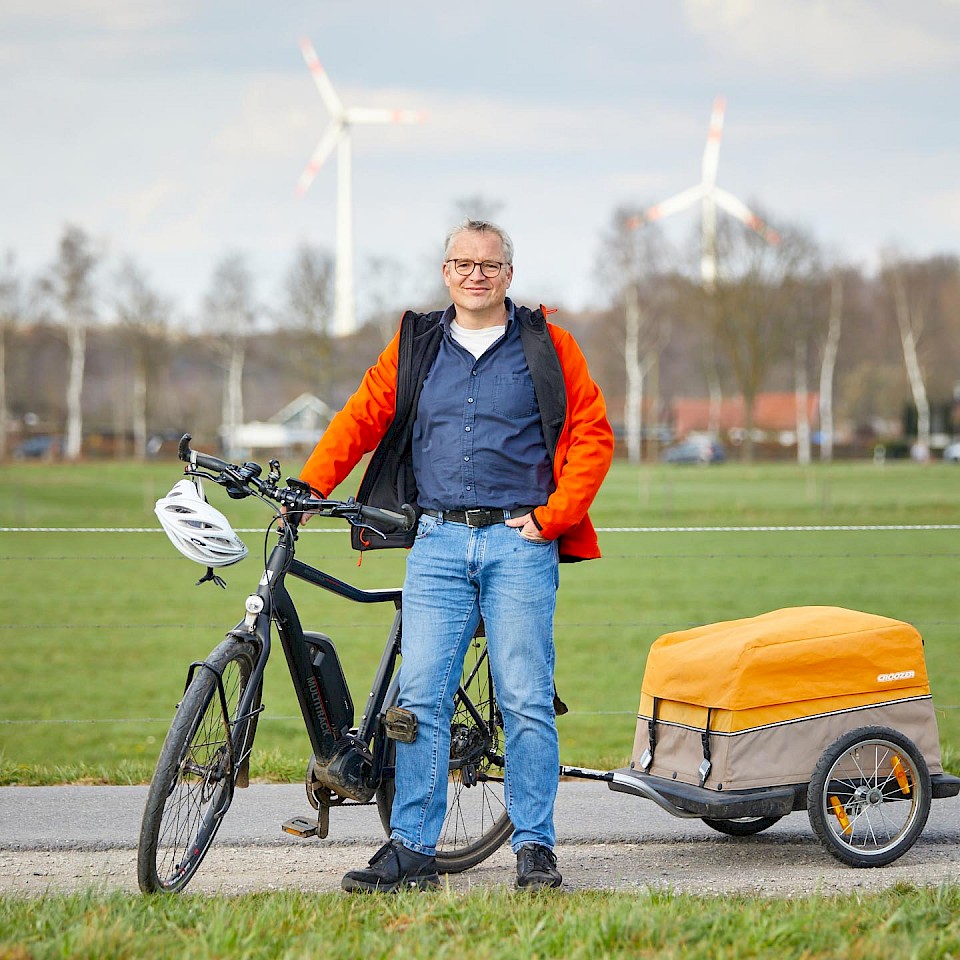
© Münsterland e.V./Philipp Fölting
Climate impact adaptation
More and more hot days in the Münsterland
Temperatures of more than 30 degrees can seriously affect the human organism. Especially in the city centre, where hot air builds up, you should not underestimate the health risks. Heat spots in the blazing sun should be avoided if possible.
In addition to heat and drought, heavy rain and storms are also expected more frequently in the coming years. We have experienced this everywhere in Münsterland in recent years. Climate change will continue to intensify if society does not finally start to take clearly recognisable action and implement the things that were decided at the UN Climate Change Conference in Paris in 2015.
Ten tips for hot days
Warm summer evenings are nice, but permanent heat and dryness does not agree with people, animals and plants. If the temperature does not drop below 20 degrees at night, you sleep less well. And at temperatures above 30 degrees during the day, many people get circulation problems, dizziness or headaches. Children and senior citizens are especially at risk. And we also have to think about our pets now.
1. drink, drink, drink.
On a hot day, two to three litres of water are easily lost. Drinking is especially important now, especially if you are doing hard physical work or sport. A glass of water every hour is good for you. In addition to water, herbal and fruit teas, fruit spritzers, buttermilk and whey are suitable thirst quenchers. Mint tea is a particularly good heat killer. Lukewarm drinks are best. After an ice-cold drink, the body has to put a lot of energy into equalising the temperature. Instead of the longed-for cooling down, we start sweating again. When it comes to alcohol, "less is more" - especially in the heat. 2.
2. eat small meals and light food.
Fruit, salads and fresh vegetables provide the body with vitamins, minerals and fluids. Fatty food, on the other hand, such as sausage and chips, is heavy on the stomach and makes the body sweat. Foods rich in water, such as melons, cucumbers or tomatoes, are particularly recommended. They consist of up to 95 percent water.
3. put on your hat.
Whether it's a baseball cap, sun hat or scarf - when the sun is strong, your head should be covered. This is especially true for children. Otherwise there is a risk of sunstroke. And that brings with it headaches and nausea. 4.
4. put your hands and feet in the water.
It is very refreshing to let cold water flow over your wrists and forearms from time to time. It is also pleasant to put a damp cloth on the back of your neck. A cold footbath in the evening is a welcome way to cool down. 5.
Take a lukewarm shower.
This is especially good before going to bed. Cold showers stress the body and cause it to sweat again.
6. make sure there is a draught.
Open all windows early in the morning and late in the evening. During the day, close all windows, lower the shutters or blinds and stop the heat from coming in. If sun protection can only be fitted indoors, it is best to choose light-coloured and reflective materials.
7. switch off electrical appliances
Televisions, game consoles or computers produce a lot of heat. If you have to fight for every degree in your home, it is best to pull the plug completely. In the height of summer, simply read a good book instead of zapping through the TV programme.
8 For a good night's sleep, all you need is a sheet.
Hang up wet towels. The evaporating cold cools the air pleasantly. Always have a glass of water at hand to replenish your fluid balance at any time. A fresh glass of water before breakfast works wonders. 9.
9. get into the shade if possible.
Stay in cool rooms when it is hot. Move shopping, gardening or exercise to the cooler morning and evening hours.
10. be lazy.
When temperatures are high, it is perfectly OK to stretch out all fours. Too much exercise is not good for the body.
Even more tips and advice can be found on the website of the Federal Environment Agency. There, the"Heat etiquette guide" provides information on the right way to behave in high temperatures. You can download it here .











